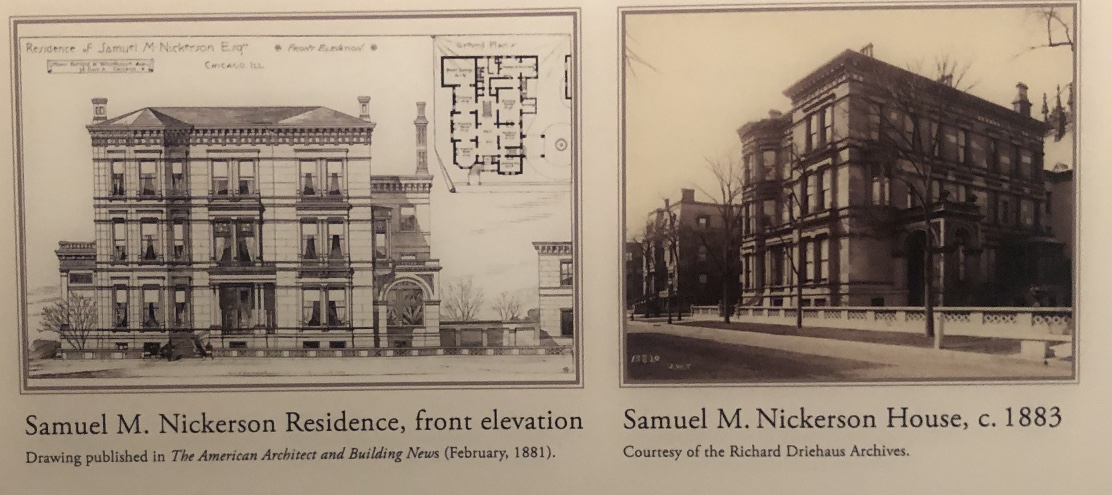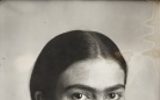Chicago is a sister city of Toronto, says art historian Rolf Achilles who is on the Board of Directors at the Richard H. Driehaus Museum
The Gilded Age was a time in American history from approximately the end of the Civil War in 1865 to the beginning of World War I in 1914. This era is known for its great wealth due to the booming industries of steel, oil and railways.
The prestigious Chicago architectural firm of Burling and Whitehouse designs an Italianate style mansion for the prominent banker Samuel Mayo Nickerson (1830-1914) and his wife Matilda Pinkham Nickerson (1837-1912). The construction of this house lasted four years, costing $450,000 (one hundred million dollars today) to build, making it one of the largest and most expensive residences at the time of its construction.
The enormous size and cost of this house demonstrates that it was a showcase mansion, erected to entertain and display the Nickersons’ prestigious art collection acquired from their travels abroad.
They had an especially important Chinese art collection which they acquired from art dealers in Chicago, New York, London and Paris. They also bought at the 1893 Fair, says Achilles.
The particular design of the house, along with the character and quality of its contents demonstrated this family’s elevated status in society and the multi-cultural influences of their experiences around the world.
Almost forty years after its construction the house was saved from demolition and purchased by fellow Chicago businessmen and women, ensuring its survival. Fast forward to 2002 : a Chicago businessman, philanthropist and private collector of the decorative arts, harboring an interest in the preservation of historic Chicago architecture, acquires the building. Instead of calling it the Nickerson Museum, Richard H. Driehaus transforms the mansion into a museum repository preserving and featuring decorative arts, providing visitors with an immersive experience of the Beauty of the Gilded Age, where the past is always present.
From 2003 to 2008, Richard H. Driehaus (1947-2021) sponsored what I call a multicultural restoration of the Nickerson Mansion. Offering attention to detail to many different cultural backgrounds in the building’s restoration, most of the interiors- including the walls, floors, and ceilings, are original or have been restored. The interior decorations of the rooms represent several different countries and cultures.
The interior aesthetic is Gilded Age Chicago with several rooms inspired in part by Sassanian-Ottoman-Byzantine aesthetics in patterns and decoration. Though the Nickerson’s assembled an important collection of Asian Bronzes, specifically Chinese, they also collected some Persian ceramics and American paintings. Interestingly, they did not decorate their rooms in Chinese or American styles, but stuck closer to aesthetics espoused by other cultures that were also in fashion at the time they were building their house, explains Achilles. One of the rooms has ornamental tiles covering three walls from the elegant wooden wainscotting to the ceiling. The Tiles are by the J. & J.G. Low Art Tile Company of Chelsea, Massachusetts, active from 1877-1902. This room was depicted in the Low Catalog (1877-1902).
These tiles were influenced by the current trend of Japanism, but installed in an Ottoman way, covering the full wall. Another room has yellow Muslim inspired tiles by the Low Company, also installed to cover a full wall. This room also has glass mosaics inspired by an early Muslim Syrian pattern below some stained glass-lunette windows. The aesthetics of this room are dependent on Ottoman tastes for over-all patterns.
Shortly after purchasing the house, in 1900, the second owner of the mansion, Lucius George Fisher (1843-1916), commissioned a new fireplace surround from Chicago architect, George W. Maher (1864- 1926). The surround, fabricated by the Chicago-stained glass firm of Giannini & Hilgart, is a superb understanding of Japanism aesthetics translated into mosaics. Both were popular in the United States at the time. There is no other fireplace surround quite like this in any other house of the time, explains Achilles. It highlights and makes visitors aware of the black burned cherry wood of the library shelving that is aesthetically enhanced by the fireplace. The room is illuminated by a spectacular stained- glass dome.
The Richard H. Driehaus Museum (former known as the Nickerson Mansion or the Marble Palace) is located at 40 East Erie Street in Chicago. It is a must-see for anyone curious to travel in luxury to the Gilded Age.
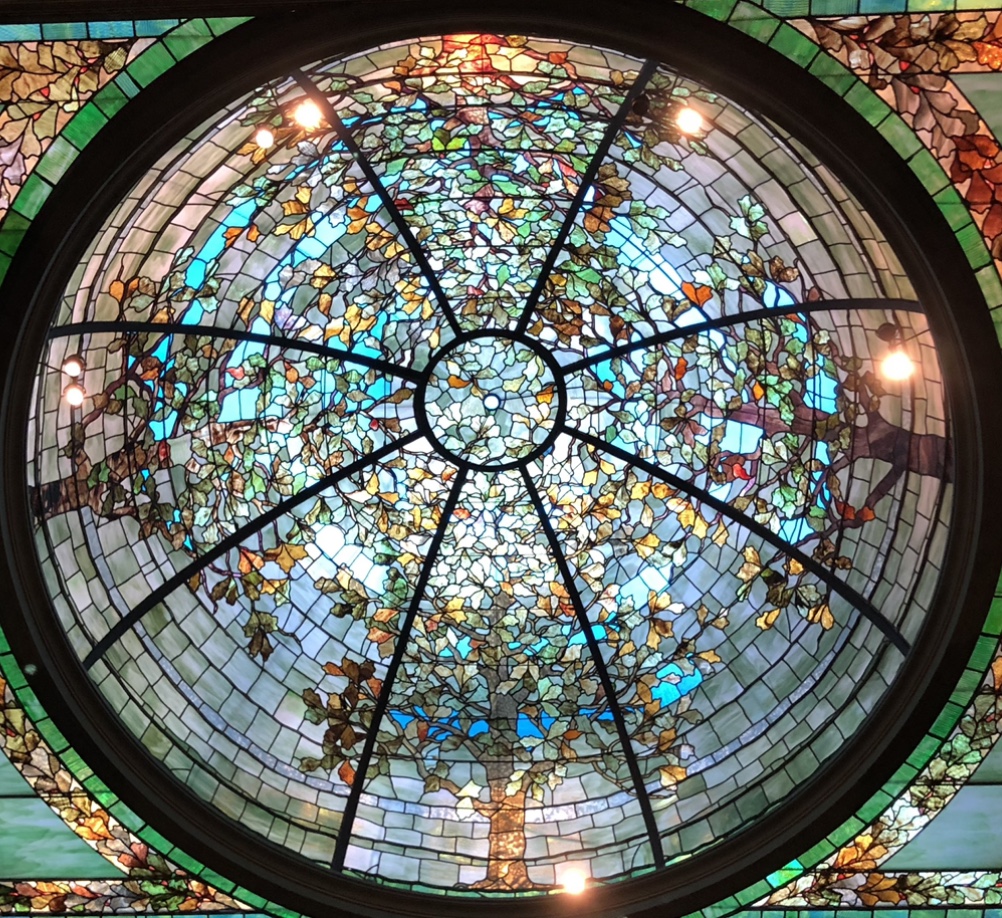
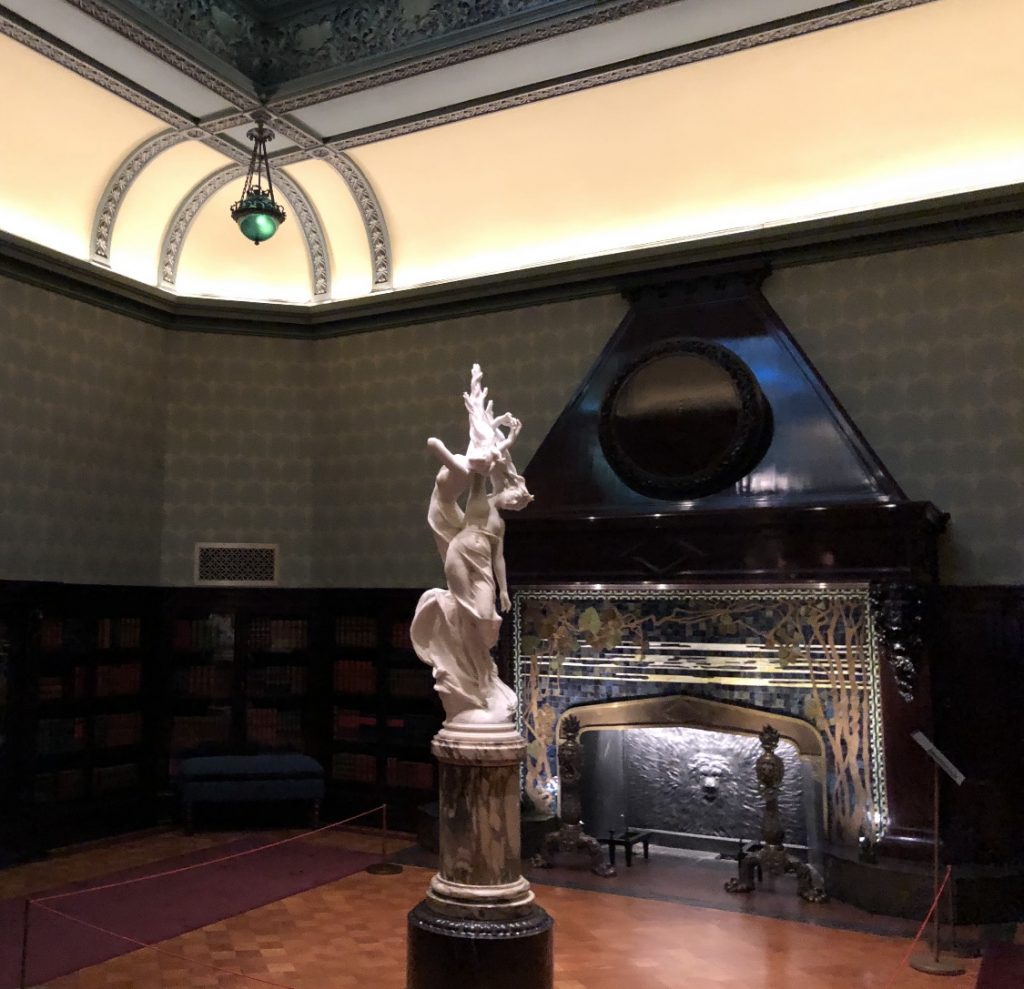
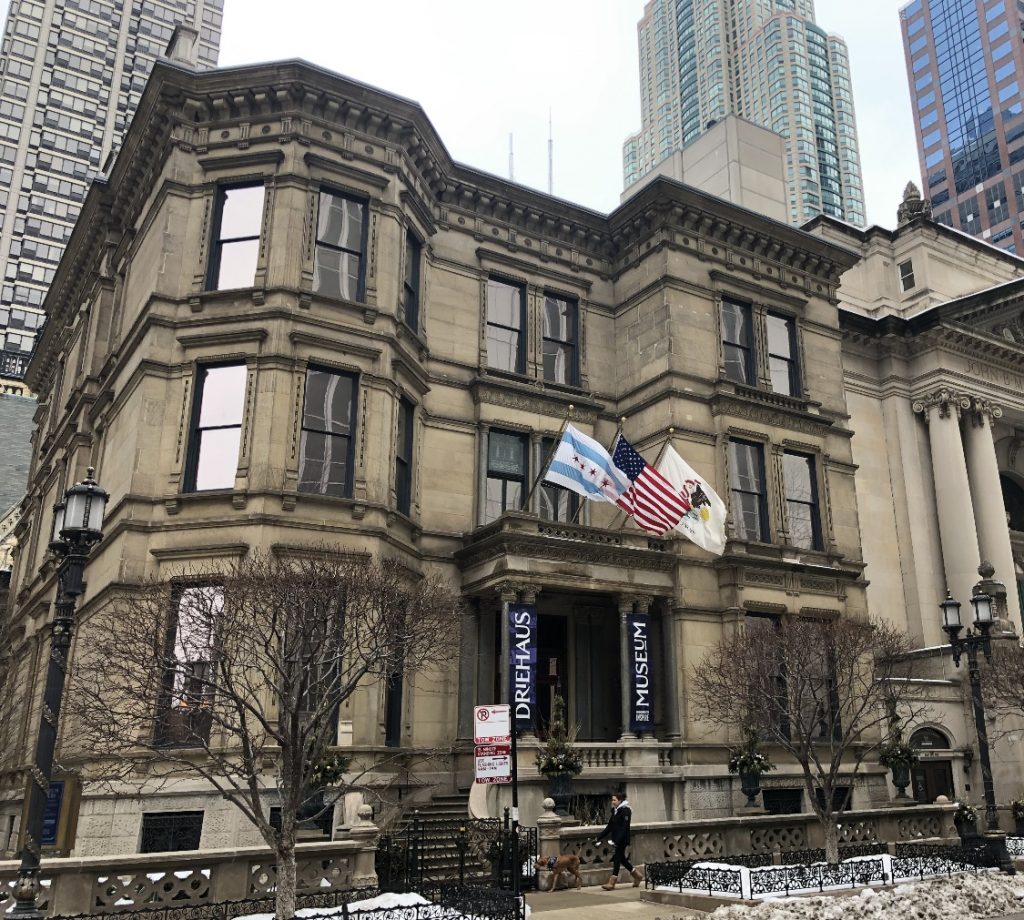
For more information:
Directions to Driehaus Museum (Richard H. Driehaus Museum) (Chicago) with public transportation
The following transit lines have routes that pass near Driehaus Museum (Richard H. Driehaus Museum)
•
Bus: 146, 147, 148, 2, 22, 29, 3, 36, 66
•
Train: MD-W, ME, RI, UP-N, UP-NW
• Chicago ‘L’: RED LINE
